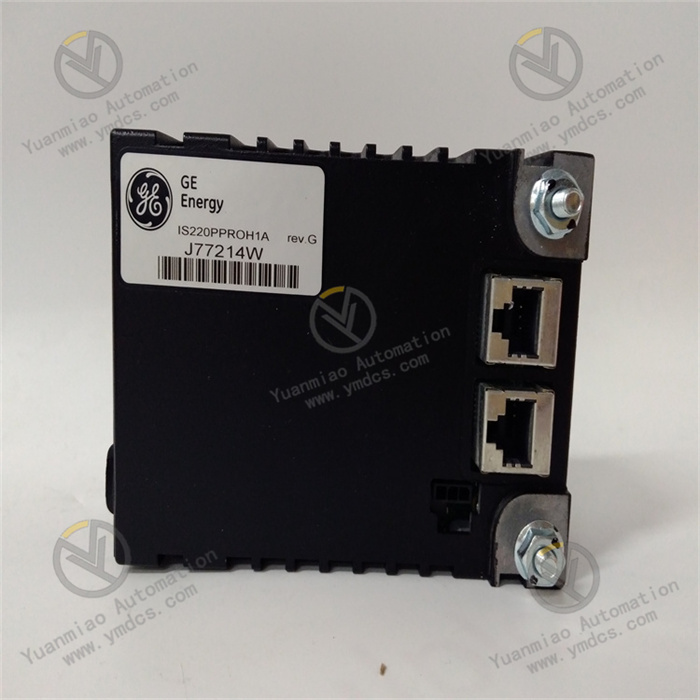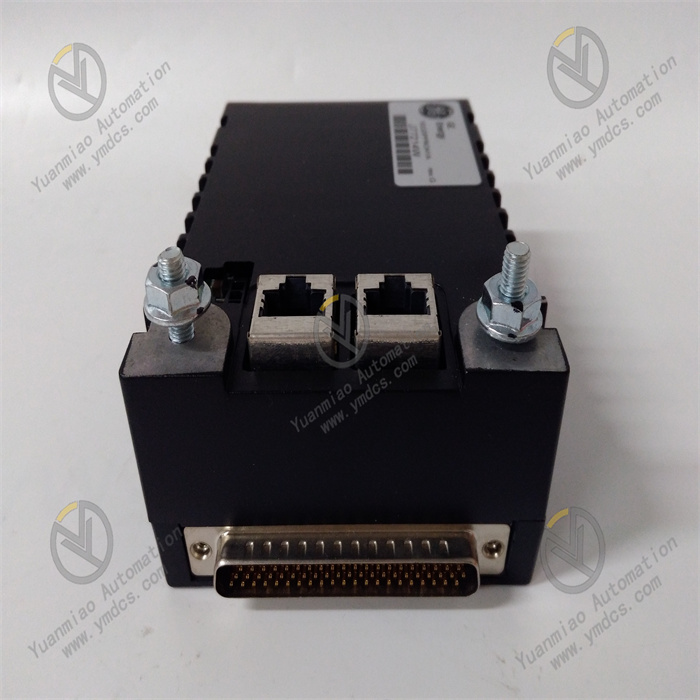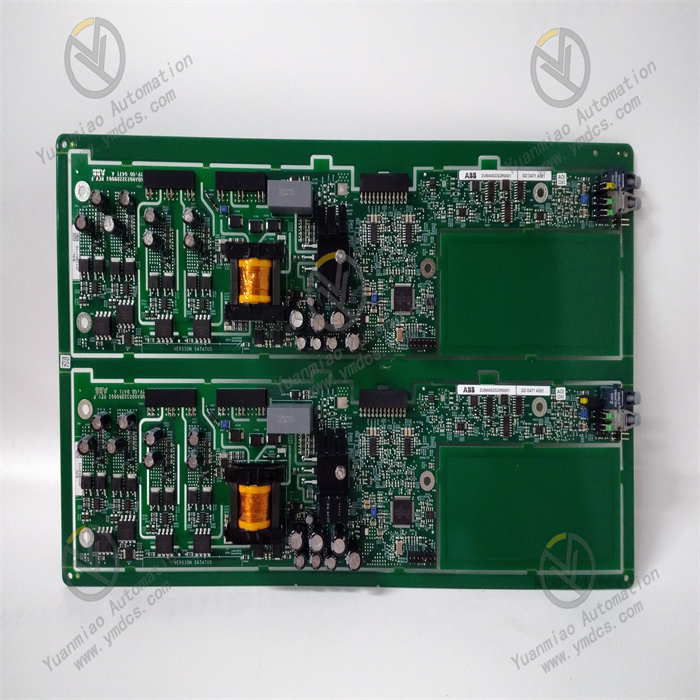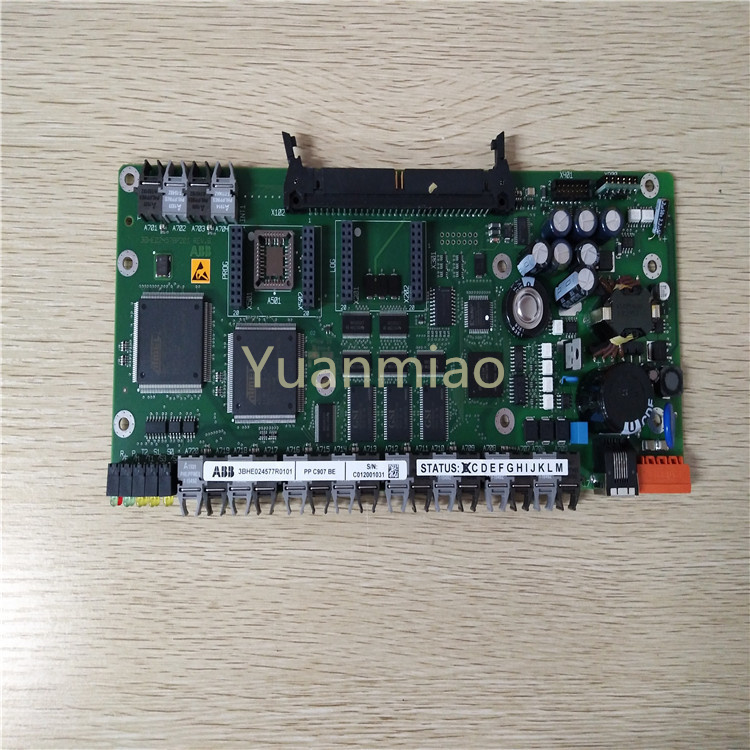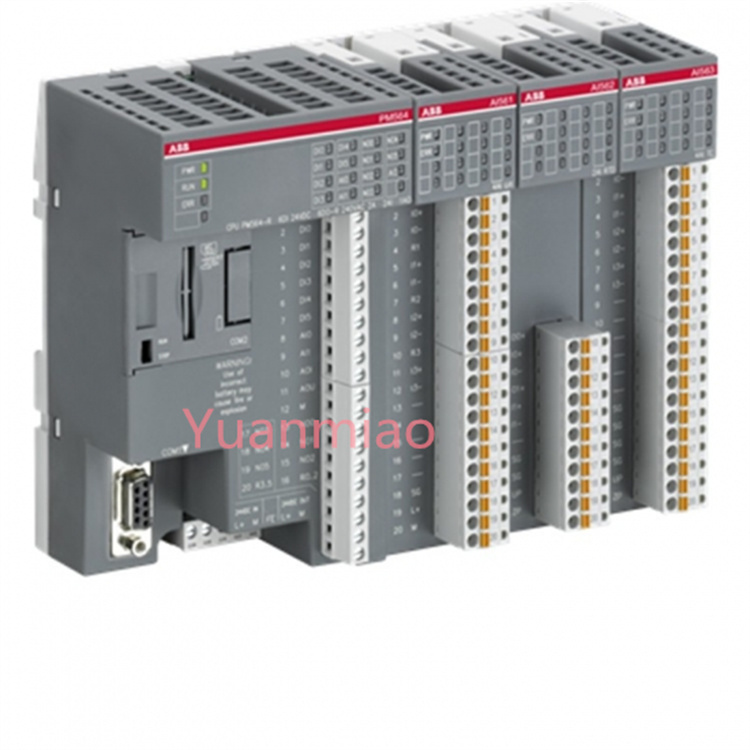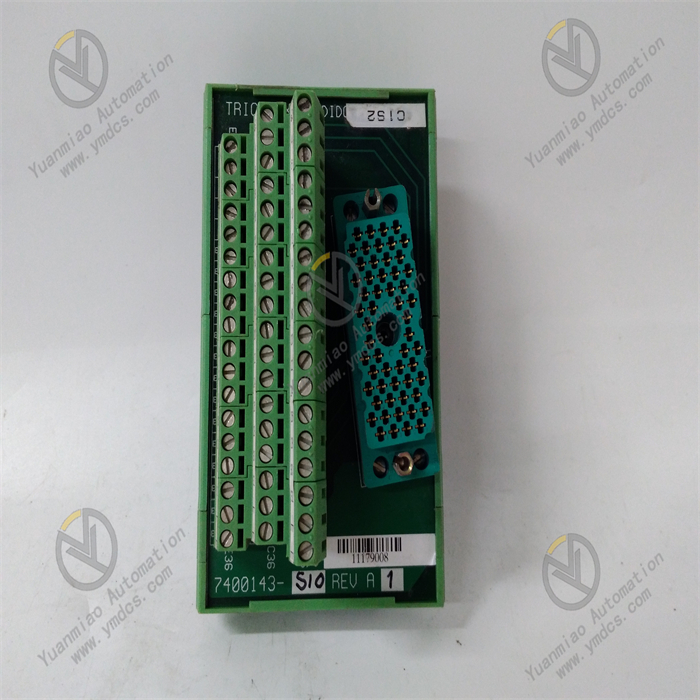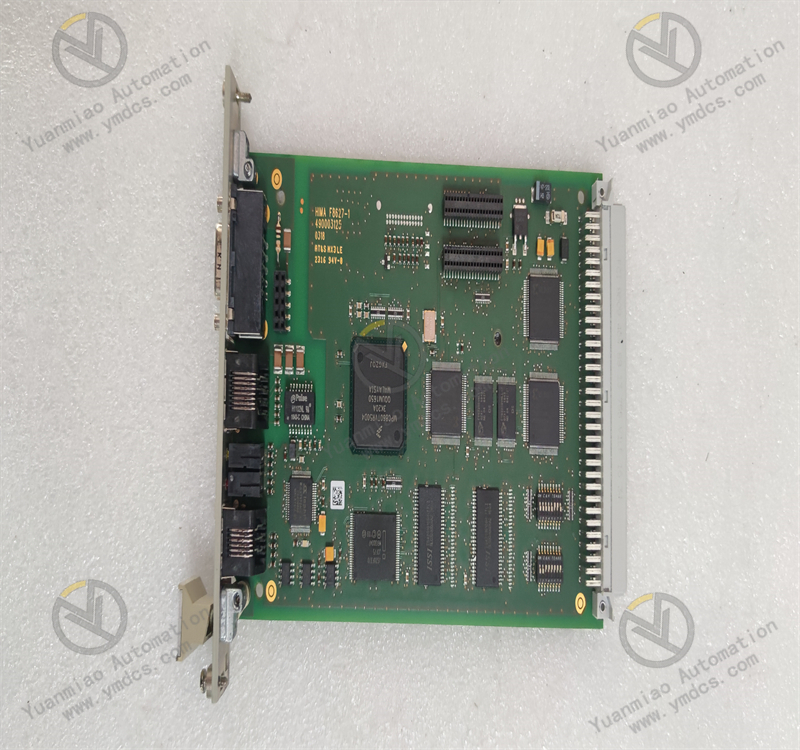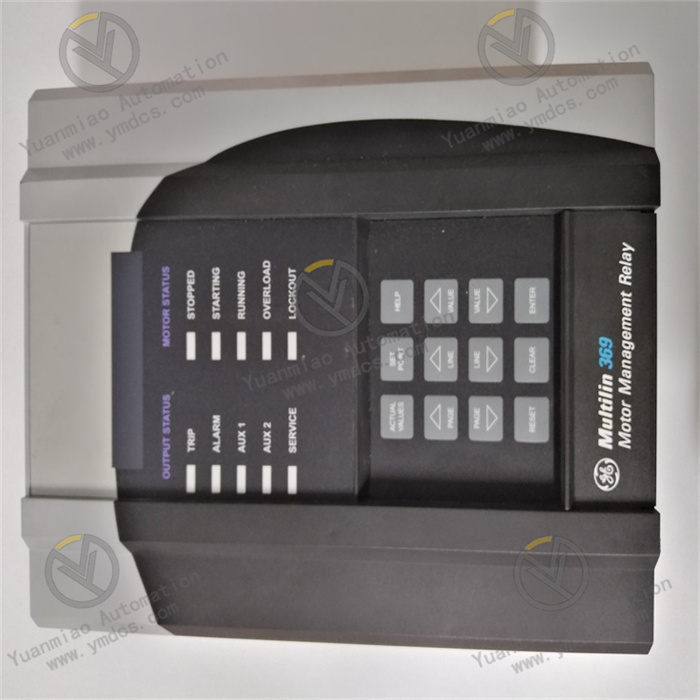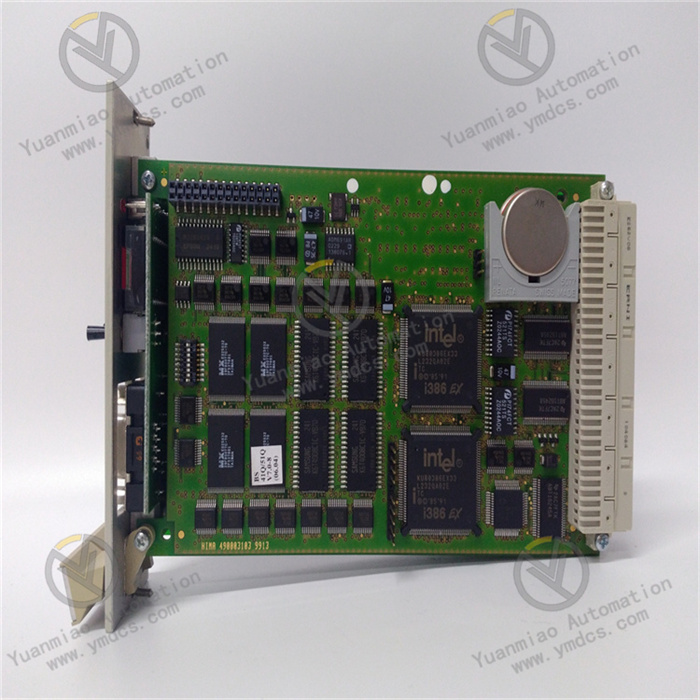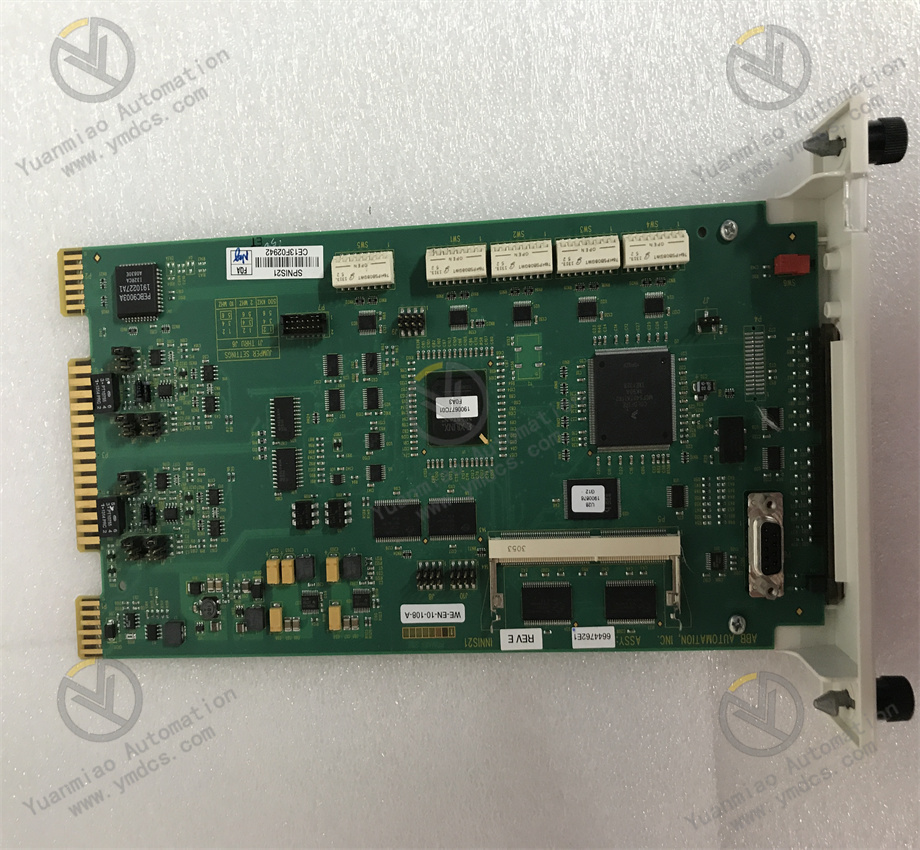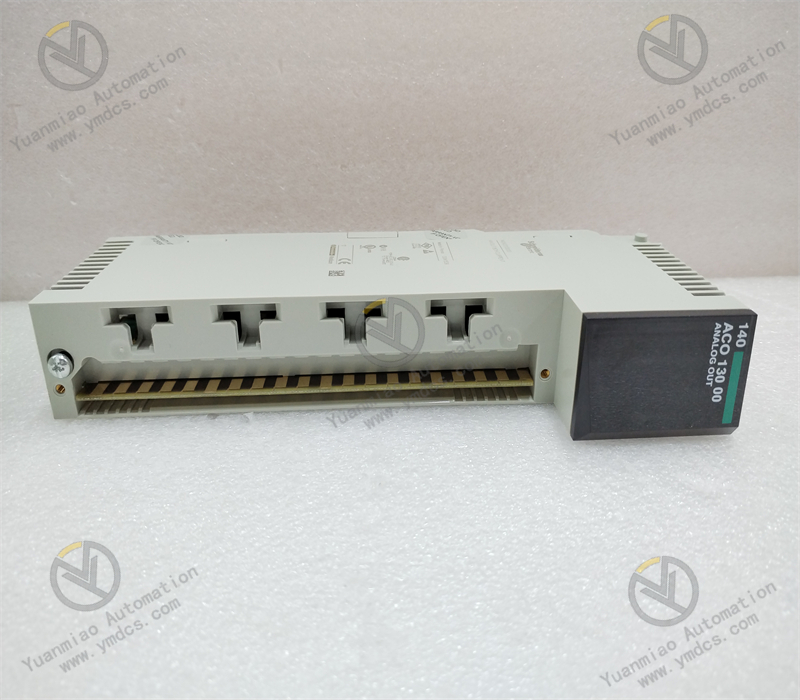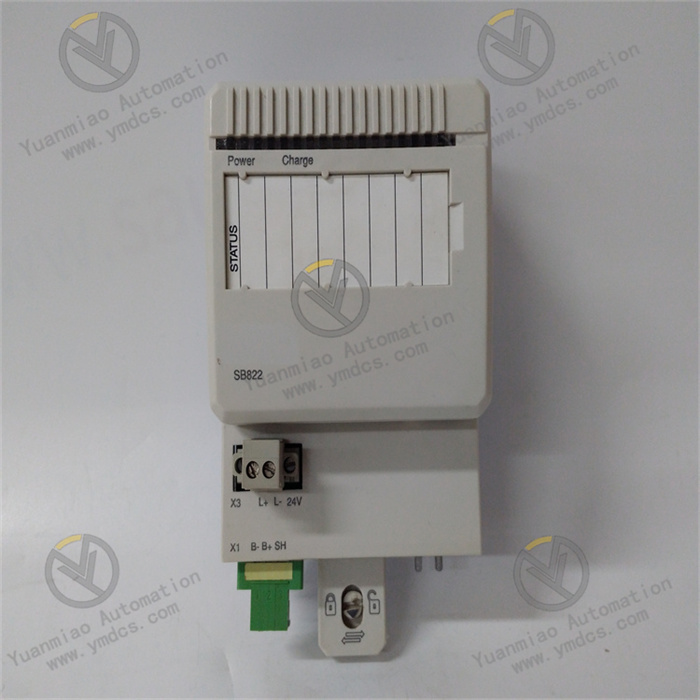Description
GE IS220PPROH1A
I. Overview
The GE IS220PPROH1A is a multi-channel process control module based on the GE Mark VIe control system architecture. It must be used in conjunction with Mark VIe controllers (e.g., IC698CPE030), racks (e.g., IC698CHS010), and IS420UCSBH1A communication modules. Its core functions include:
- Collecting on-site process parameters (such as temperature, pressure, and flow, with signal types of 4-20mA/0-10V) via 16 analog input (AI) channels;
- Driving actuators (such as control valves and frequency converters) through 8 analog output (AO) channels to adjust process parameters;
- Monitoring equipment status (such as valve on/off and sensor faults) via 8 digital input (DI) channels;
- Controlling auxiliary equipment (such as pumps and solenoid valves) through 8 digital output (DO) channels;
- Incorporating a multi-loop PID control algorithm that supports complex control strategies like cascade control and ratio control;
- Featuring signal filtering, linearization processing, and fault self-diagnosis (channel short circuit/open circuit, signal over-range);
- Supporting parameter configuration and control logic configuration via the GE Mark VIe Configuration Tool.
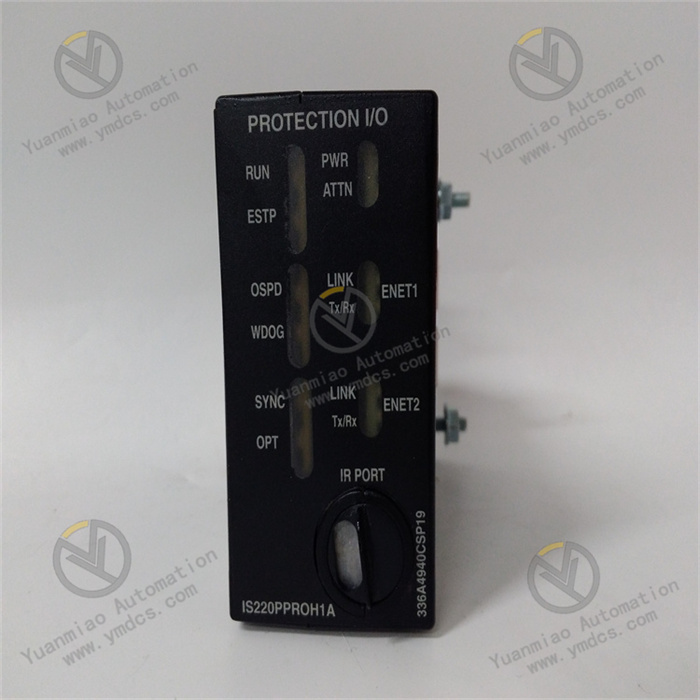
Its core advantages lie in "high-precision signal processing (AI accuracy of ±0.05% FS), multi-channel integration (40 I/O channels), wide environmental tolerance (-40℃~70℃), and SIL 2 safety certification". It is particularly suitable for scenarios requiring multi-parameter coordinated control (e.g., boiler water level regulation in thermal power units), production equipment with high-precision requirements (e.g., chemical product purity control), and harsh industrial environments (high temperature, high electromagnetic interference).
The IS220PPROH1A collects signals of boiler drum water level (4-20mA), feedwater flow (4-20mA), and steam flow (4-20mA) through 16 AI channels. It has a built-in three-element PID control algorithm and controls the opening of the feedwater control valve via 8 AO channels. When the water level deviates from the set value by ±5mm, the module adjusts the output signal within 0.1 seconds, maintaining the water level control accuracy at ±3mm and preventing boiler waterlogging or dry boiling (with maintenance costs exceeding RMB 5 million). In a 1.5 million t/a diesel hydrotreating unit of a petrochemical plant, the module collects reactor temperature (0-10V) and hydrogen partial pressure (4-20mA) signals via AI channels, and controls the opening of the heater fuel valve through AO output. The temperature control deviation is ≤±1℃, ensuring sufficient hydrogenation reaction and increasing the diesel product qualification rate from 98% to 99.8%. In a continuous reactor system of a chemical plant, the IS220PPROH1A withstands a high temperature of 65℃ in the workshop and strong electromagnetic interference (with 10kV frequency converters nearby), operating continuously for 3 years without signal drift. Its Mean Time Between Failures (MTBF) is ≥1,000,000 hours, meeting the high reliability requirement of "overhaul once every four years" for chemical equipment.
The module adopts a "multi-channel modular + high anti-interference" architecture:
- I/O Channel Design: It includes 16 AI channels (supporting 4-20mA/0-10V, 16-bit resolution), 8 AO channels (supporting 4-20mA/0-10V, 16-bit resolution), 8 DI channels (24V DC dry contacts), and 8 DO channels (relay output of AC250V/2A). All analog channels are equipped with photoelectric isolation (isolation voltage ≥2.5kVrms) and signal filtering (configurable low-pass filter cutoff frequency) to prevent electromagnetic interference from affecting signal accuracy. Digital channels have overvoltage/overcurrent protection (±30V ESD protection for DI channels and built-in fuses for DO channels).
- Core Control Unit: It has a built-in 32-bit floating-point DSP processor (operating rate of 600 MIPS), supporting parallel processing of 8 independent PID control loops with configurable control cycles (10ms~1s). It is equipped with 16MB Flash (for storing control logic and parameters) and 32MB RAM (for caching real-time data and intermediate calculation values) to ensure fast execution of complex control algorithms.
- Housing and Protection: It uses an industrial-grade cast aluminum housing, with dimensions conforming to the 3U standard rack (19 inches) and an installation depth ≤220mm, compatible with Mark VIe standard racks. It has an IP20 protection rating (dust-proof and finger-proof), an operating temperature range of -40℃~70℃, a storage temperature range of -55℃~85℃, and a relative humidity of 5%~95% (non-condensing), making it suitable for high-temperature environments such as power plant control rooms and petrochemical cabinet rooms.
- Safety and Redundancy Design: It supports module-level redundancy (dual-module hot backup with a switching time ≤100ms). When a single module fails, the backup module immediately takes over control without control interruption. It complies with the IEC 61508 SIL 2 safety certification, and key circuits (such as power supply and CPU) adopt a dual-redundant design to avoid control failure caused by a single point of failure. A built-in Watchdog timer prevents control abnormalities caused by program crashes.
II. Technical Parameters
1. I/O Channel Parameters
| Parameter Category | Specific Specifications |
|---|---|
| Analog Input (AI) | 16 independent channels, supporting 4-20mA DC (2-wire/4-wire) and 0-10V DC; 16-bit resolution; accuracy of ±0.05% full scale (at 25℃); input impedance: ≤100Ω for current signals, ≥1MΩ for voltage signals; sampling rate: 100Hz per channel (configurable 10-1000Hz) |
| Analog Output (AO) | 8 independent channels, supporting 4-20mA DC and 0-10V DC; 16-bit resolution; accuracy of ±0.1% full scale (at 25℃); output load: ≤500Ω for current signals, ≥1kΩ for voltage signals; response time ≤10ms (from command to stable output) |
| Digital Input (DI) | 8 independent channels, supporting 24V DC dry contacts (high level ≥18V, low level ≤5V); input current: ≤5mA at 24V DC; response time ≤1ms; supporting edge detection (rising edge/falling edge) |
| Digital Output (DO) | 8 independent channels, relay output (AC250V/2A, DC30V/2A); supporting normally open/normally closed contact configuration; output protection: built-in 10A fuse (overcurrent protection) |
2. Control Performance Parameters
| Parameter Category | Specific Specifications |
|---|---|
| Processor | 32-bit floating-point DSP (TI C6748), operating rate of 600 MIPS, supporting hardware floating-point arithmetic |
| PID Control Loops | Supports 8 independent PID loops, and strategies such as cascade control, ratio control, feedforward control, and split-range control |
| PID Parameter Configuration | Proportional band (P): 1%~1000%, integral time (I): 0.1s~1000s, derivative time (D): 0~100s; supports Auto-tune function |
| Control Cycle | Configurable 10ms~1s, minimum control cycle of 10ms (suitable for fast-response scenarios such as steam temperature control in thermal power units) |
| Data Processing Functions | Supports signal filtering (low-pass/high-pass/band-pass), linearization processing (supporting 16-segment polyline), and range conversion (0-100% customizable) |
| Fault Alarm Function | Supports fault alarms such as AI signal over-range, AO output short circuit, and DI signal loss; alarm thresholds are configurable |
3. Environmental and Electrical Parameters
| Parameter Category | Specific Specifications |
|---|---|
| Operating Temperature | -40℃~70℃ (natural cooling without fans, relying on rack air ducts) |
| Storage Temperature | -55℃~85℃ |
| Relative Humidity | 5%~95% (non-condensing), complying with the IEC 60068-2-38 humidity cycle standard (2000 hours of fault-free operation) |
| Electromagnetic Interference Resistance | Emission: EN 55032 Class A; Immunity: EN 61000-6-2 (ESD ±15kV air discharge, EFT ±4kV power port, RF radiation 30V/m (80MHz~2GHz)) |
| Vibration Resistance | Complies with the IEC 60068-2-6 standard: 10-500Hz, 2g acceleration (continuous operation) |
| Power Supply Requirements | Powered by the Mark VIe rack: +5V DC (±5%), maximum power consumption ≤15W; +24V DC (±10%), used for I/O channel isolation, maximum power consumption ≤8W |
III. Functional Features
1. High-Precision Multi-Channel Integration, Simplifying Process Control Architecture
With "full-type I/O integration" as its core, the IS220PPROH1A addresses the pain points of traditional control modules, such as "single channel type and multi-module stacking":
- Synchronized Multi-Parameter Collection: 16 AI + 8 DI channels can simultaneously collect process parameters (temperature, pressure, flow, etc.) and equipment status signals. For example, in boiler control of thermal power units, AI channels collect drum water level, feedwater flow, steam flow, and furnace temperature, while DI channels monitor the on/off status of feedwater valves and pump operation status—no additional collection modules are needed. One IS220PPROH1A replaces 4 dedicated I/O modules (AI+AO+DI+DO), reducing rack space occupancy by 75% and hardware costs by 50%.
- High-Precision Analog Signal Processing: The AI channels have an accuracy of ±0.05% FS and 16-bit resolution, enabling them to capture tiny signal changes (e.g., 0.1℃ temperature fluctuation in a hydrogenation reactor). In the purity control of a chemical product, by accurately collecting reaction temperature signals, the product purity deviation is reduced from ±0.5% to ±0.2%. The AO channels have an accuracy of ±0.1% FS to ensure precise actuator adjustment—for example, when controlling the opening of a control valve, the output deviation is ≤0.02mA, and the valve positioning accuracy reaches ±0.5%.
- Fast Digital Signal Response: The DI channels have a response time of ≤1ms to capture real-time equipment status changes (e.g., sudden valve closure), and the DO channel relays support fast switching (≤10ms). In an overpressure scenario of a reactor, after the DI channel detects the action of a pressure switch, the DO channel immediately triggers the pressure relief valve to open, avoiding overpressure risks.
2. Flexible PID Control Strategies, Adapting to Complex Process Requirements
In response to the characteristics of "multi-variable coupling and dynamic operating condition changes" in industrial processes, the module achieves precise adjustment through rich control algorithms:
- Independent Multi-Loop Control: It supports 8 independent PID loops, which can control different process parameters simultaneously. For example, in a refining unit, one module controls reactor temperature (Loop 1), hydrogen partial pressure (Loop 2), and feed flow (Loop 3) at the same time. Parameters of each loop are configured independently without mutual interference. It also supports online modification of PID parameters to optimize control effects without shutdown.
- Complex Control Strategies: It supports cascade control (e.g., "main loop temperature - secondary loop flow" cascade to address the impact of flow disturbance on temperature), ratio control (e.g., adjusting the ratio of fuel to air to ensure full combustion), and feedforward control (compensating for known disturbances in advance, such as the impact of thermal power unit load changes on steam temperature). In the steam temperature control of a thermal power unit, the "steam temperature - desuperheating water flow" cascade control is adopted, reducing the steam temperature deviation from ±5℃ to ±2℃.
- Auto-Tune Function: It has a built-in PID parameter auto-tuning function, which quickly calculates the optimal P, I, and D parameters through step tests, avoiding the complexity and errors of manual tuning. In the commissioning of a chemical plant reactor, the Auto-Tune function shortens the PID tuning time from 4 hours to 10 minutes, and the control deviation quickly converges to ±1%.
3. High Reliability and Anti-Interference Design, Ensuring Stable Operation Under Harsh Conditions
Through hardware reinforcement and anti-interference optimization, the module is adapted to complex industrial environments:
- Wide Temperature Range and Corrosion Resistance: The -40℃~70℃ wide temperature design is suitable for outdoor use in northern winters (e.g., power plant cooling tower control) and workshops in southern summers (e.g., 65℃ high temperature in petrochemical equipment areas). The cast aluminum housing is resistant to oil pollution and mild chemical corrosion. In a sulfur-containing environment of an oil refinery, the module operates continuously for 3 years without housing corrosion.
- Strong Electromagnetic Interference Resistance: The analog channels have photoelectric isolation (2.5kVrms) and the digital channels have ESD protection (±15kV). Near 10kV frequency converters (with electromagnetic radiation of 50V/m), the signal-to-noise ratio of AI signals is ≥85dB without false fluctuations (the signal-to-noise ratio of traditional modules is ≤65dB). In the rolling mill control system of an iron and steel plant, the module is not affected by the strong electromagnetic interference of the rolling mill, and the roll temperature control accuracy is stably maintained at ±3℃.
- Module-Level Redundancy: It supports dual-module hot backup redundancy. When the main module fails, it switches to the backup module within 100ms without control interruption. In the auxiliary feedwater system of a nuclear power plant's conventional island, the redundant modules ensure uninterrupted control of the feedwater valve, avoiding abnormalities in the nuclear island cooling system. The Mean Time Between Failures (MTBF) is ≥1,000,000 hours, meeting the long-cycle operation requirements of industrial equipment.


